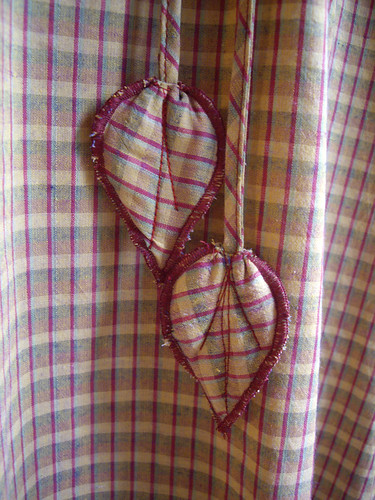After years of buying only sample pieces from organiccotton.biz, I finally got around to ordering some yardage. The skirt above is a blend of organic cotton and bamboo, and it’s beautifully soft and drapey.
I don’t believe most of the claims about bamboo fabric having practically magical anti-fungal and anti-bacterial properties. The plant material (which does have those qualities) needs to go through so many processes before it can be spun, it’s doubtful whether any of its beneficial aspects would survive. However, it’s a very good fibre to use for fabric. It needs no pesticides to grow, uses far less water than cotton, and it grows so rapidly that it’s quick to replenish, which means you don’t need acres of space to plant it. Even better, the fabric it produces is unbelievably soft.
This is my usual ruffled skirt – take one calf length a-line skirt pattern, and stick a ten-inch ruffle on the bottom. Simple! It has pockets in the side seams, and the edges of the ruffle are overlocked with a satin stitch.
The waistband I pretty much made up as I went along. It’s based on an old favourite skirt that wore out long ago. The centre channel has a bias tape drawstring threaded through two eyelets. The channels above and below have narrow elastic threaded through.
Things I learnt as I was making it?
- Thread the drawstring through before the elastic.
- Make absolutely certain that the elastic isn’t twisted.
- Whilst the bias tape foot for my sewing machine is a marvellous invention, I need to learn how to make the joins in the bias strip go through it more smoothly.
The finishing detail is this pair of little leaves on the ends of the drawstring. They each have an offcut of batting inside, making them a little bit textured and squishy. I was torn between overlocking the edges or leaving them raw so that they’d fray a little in the wash. I do like the satin stitch edge, not least because they make the leaves stand out against the skirt, but it isn’t as tidy as I’d have liked. A little more practice needed, perhaps.
I keep going on about the softness of the fabric, but that really is its stand-out quality for me. It’s like the softest sheets you’ve ever slept on, or that favourite shirt you’ve been wearing for years.
I’m working on a set of costumes at the moment, all of which seem to be made with synthetic fabrics and have lots of fiddly little details. It’s been really nice to take a break and sew something simple, that feels like a little bit of luxury.




